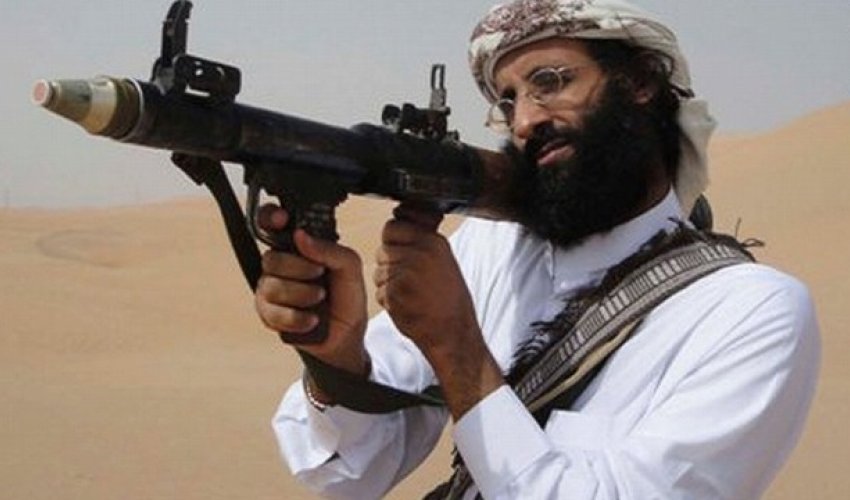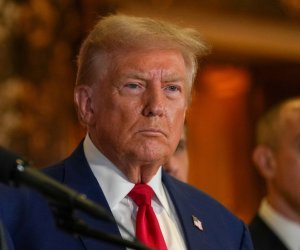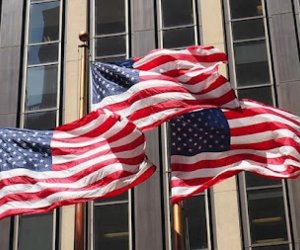The American who inspires terror from Paris to the U.S.

The deadliest jihadist terrorist attack in Europe in a decade was inspired and perhaps even was instigated by an American citizen, Anwar al-Awlaki, who died four years ago in a CIA drone strike in Yemen.
One of the Kouachi brothers, who mounted the attack last week on the Charlie Hebdo magazine in Paris, cited al-Awlaki as his operational commander. Before he died on Friday, one of the brothers told a French news network, "I was sent, me, Cherif Kouachi, by al Qaeda in Yemen. I went there and Sheikh Anwar al-Awlaki financed my trip."
U.S. officials say that the other Kouachi brother, Said, spent several months in Yemen in 2011, receiving training from al Qaeda.
Al-Awlaki was both the instigator of the al Qaeda's affiliate in Yemen's plots to attack the West and also one of the most influential clerics in the world of militant Islam. Indeed, al-Awlaki is the key influence behind many of the major terrorist attacks and plots of the past half decade in the West, and he has continued to retain that influence even after President Barack Obama made the decision five years ago to kill him with a drone strike.
Al-Awlaki was an influence on the two Tsarnaev brothers, who are alleged to have killed three people at the Boston Marathon bombings in 2013.
He also influenced Carlos Bledsoe, who shot up an Army recruiting center in Little Rock, Arkansas, killing an American soldier in 2009. After the attacks, Bledsoe said his spiritual inspiration was al-Awlaki.
Major Nidal Hasan killed 13 people at Fort Hood, Texas, in 2009 after sending 18 emails to al-Awlaki in Yemen, a correspondence that was known to the FBI. Al-Awlaki did not direct this attack, but he was the key inspiration for Hasan.
The "underwear bomber" Umar Farouk AbdulMutallab was directed by al-Awlaki to bring down an American jet over an American city in the fall of 2009. In the days following AbdulMutallab's Christmas Day 2009 botched attack to bring down Northwest Flight 253 over Detroit with a bomb concealed in his underwear, it became clear from AbdulMuttalab's FBI interrogations that it was al-Awlaki who had ordered the young Nigerian man to carry out the operation.
Al-Awlaki's influence
What made al-Awlaki so influential is that, unlike a number of leaders of al Qaeda such as Osama bin Laden, he was a cleric, so he could present himself as a leading religious figure. Second, because al-Awlaki had spent much of his adult life in the States, he communicated with his followers in colloquial, accessible American English.
At one point, he said that, "Jihad is becoming as American as apple pie." Third, his sermons were made widely available on YouTube and, indeed they continue to be available.
Anwar al-Awlaki was a U.S. citizen by virtue of his birth in Las Cruces, New Mexico, in 1971 while his Yemeni father was studying at New Mexico State University. Six years after al-Awlaki was born, his family moved back to Yemen, but he returned to the States for college and remained there for much of his adult life.
As an undergrad, he attended Colorado State to study engineering.
In 1995, al-Awlaki moved to San Diego, where he took up a job as a cleric at Al-Rribat mosque.
Al-Awlaki also started attending San Diego State, where he earned a master's degree in education. In San Diego, al-Awlaki encountered two men who, together with their 17 comrades, would transform American history. They were Khalid al-Mihdhar and Nawaf al-Hazmi.
The CIA was tracking Mihdhar and Hazmi from the time that they attended an al Qaeda summit in Malaysia on January 5, 2000. Ten days after the meeting in Malaysia, on January 15, 2000, they flew into Los Angeles. They also started spending time with al-Awlaki. Indeed, al-Awlaki wrote a check to Hazmi for $175 three months before the 9/11 attacks.
After the attacks on New York and Washington, these suspicious contacts made al-Awlaki the subject of intense FBI interest. The 9/11 attacks happened on a Tuesday. By Saturday, the FBI was knocking on al-Awlaki's door. FBI agents also met with al-Awlaki on three other occasions, and they secretly trailed his white Dodge Caravan for many weeks afterwards
At the time, the FBI couldn't determine whether al-Awlaki was someone who just had happened to encounter a number of nefarious individuals on a regular basis in the years before 9/11 or whether there was something more sinister about the cleric's social circle. By early spring 2002, al-Awlaki was studying in a doctoral program at George Washington University in Washington, but he decided to leave the country.
Al-Awlaki arrived in London in March 2002 and found a more congenial environment than in the States. The city was sometimes referred to as "Londonistan" because of the relatively large number of Islamist militants living there and permissive British laws regarding free speech.
Imprisonment in Yemen
After two years in London, al-Awlaki traveled back to Yemen. In 2006, he was thrown into a Yemeni jail. Al-Awlaki characterized this as the result of his intervention into one of Yemen's numerous, and often deadly, tribal disputes. The U.S. government asserted that his imprisonment, in fact, came after al-Awlaki became involved in an al Qaeda plot to kidnap a U.S. official.
During this period, the FBI's interest in al-Awlaki remained high, and FBI agents interrogated the cleric while he was in the Yemeni prison. In December 2007, al-Awlaki was released. Those who knew al-Awlaki found him to have emerged hardened after his time in jail.
By the time al-Awlaki was released, he was becoming the key cleric in the English-speaking world of radical Islam, one that militants were turning too for answers. Osama bin Laden was still the overall inspirational head of the al Qaeda network, but he remained inaccessible in his hideout in Pakistan, whereas for militants in the West, you could chat with al-Awlaki though his website and in colloquial English to boot.
Of the some 250 individuals charged or convicted of involvement of some kind of jihadist terrorist activity in the United States following the 9/11 attacks, an astonishing 62 were found to have al-Awlaki's writings or sermons in their possession or cited him as an influence and a further six corresponded with him or traveled to Yemen to meet with him, according to a count by New America.
The drone debate
Following the Christmas Day plot, al-Awlaki's role as the leader of al Qaeda in Yemen's plans to target the United States came into focus. Senior White House officials began debating whether they should target him for death. Al-Awlaki was no longer merely the cleric who inspired militants in the West that they had previously pegged him for.
It was a momentous debate. Never before had a president and his advisers seriously contemplated authorizing the assassination of an American citizen.
President Obama and a small team of senior national security officials were in the unusual position of acting as al-Awlaki's jury, judges and de facto executioners.
A few days after the Christmas Day plot, Obama gave his verbal approval to target al-Awlaki for death. While the President had agonized over some of the decisions to target militants for death, the decision to kill al-Awlaki was an easy one, according to a senior Obama administration official who spoke to me about it. In the President's mind, the weight of the evidence that al-Awlaki was constantly plotting new ways to kill Americans was sufficient to order his death.
In the summer of 2010, al Qaeda in Yemen published the first issue of their English language magazine, Inspire. It underlined how obsessed the group, led by al-Awlaki, was about the issue of those who had purportedly "defamed" Islam.
The debut of Inspire featured a "hit list" that included Flemming Rose and Kurt Westergaard, the editor and cartoonist who were responsible for a set of cartoons of the Prophet Mohammed that were published in Denmark in 2005 in the Jyllands-Posten newspaper.
Also on the hit list was Molly Norris, a cartoonist living in Seattle who had similarly initiated an "Everybody Draw Mohammed Day" in 2010.
Inspire urged that they all should be killed and featured an essay by al-Awlaki who added his clerical imprimatur to this notion, saying that those who denigrated the Prophet are "insulting of over a billion Muslims worldwide. ... We will fight for him, we will instigate, we will bomb and we will assassinate."
Al-Awlaki also released on the Internet an hourlong sermon, "The Dust Will Never Settle Down." Delivered in colloquial American English, it urged the assassination of anyone who "defamed" the Prophet Mohammed. In the lecture, al-Awlaki said, "Harming Allah and his Messenger is a reason to encourage Muslims to kill whoever does that."
A good lead on al-Awlaki
On May 5, 2011, just three days after bin Laden was killed in a U.S. Navy SEAL raid in Abbottabad, Pakistan, Obama was briefed by his national security team that there was a good lead on al-Awlaki's whereabouts in Yemen.
Drones tracking al-Awlaki and his associates flew out of bases in east Africa and Saudi Arabia as well as from U.S. Navy ships cruising in the Arabian Sea. On the evening of May 5, special operations planners sent Predator drones, Harrier jets and an aircraft to follow al-Awlaki ,who was riding in a pickup across the deserts of Shabwah in southern Yemen.
Al-Awlaki's truck was driving fast and the flight crews tracking the vehicle could not keep their laser-guided weapons locked on the fast-moving target.
The next good intelligence about al-Awlaki's location came in September. Now the hunt for elusive Yemeni-American cleric centered on the governorate of Al Jawf on Yemen's northern border with Saudi Arabia.
An al Qaeda operative in Yemeni custody said that al-Awlaki was hiding in a house in the town of Khashef. Al-Awlaki made an uncharacteristic mistake; instead of changing his hideout location often, he remained in the house in Khashef for two weeks. The cleric was living in a location where he was surrounded by children, which no doubt made him think that there was a lower risk that the United States would take a shot at him with a drone.
On the morning of Friday, September 30, 2011, al-Awlaki had just finished breakfast. He and his companions got into some vehicles, and CIA drones soon locked on to them, shooting missiles that killed al-Awlaki at 9:55 a.m. Also killed along with him was Samir Khan, another American citizen who had joined al Qaeda in Yemen.
Killing the man did not kill his ideas or his influence. It seems, if anything, only to have magnified them among Islamist militants living in the West. Some two dozen militants indicted in the States since al-Awlaki's death have cited his influence or possessed his propaganda, according to a count by New America. For instance, Quazi Nafis, a 21-year old Bangladeshi on a student visa, was arrested in 2012 for plotting to bomb the New York Federal Reserve. Nafis said that al-Awlaki's ideas had influenced him.
In 2013, the government filed an indictment against Terry Loewen, a 58-year-old man from Wichita, Kansas, alleging that he attempted to explode a car bomb at Wichita Airport.
Loewen told an undercover informant, "I have read Anwar Al-Awlaki's '44 Ways of Jihad,' and like everything l've ever read of his, it's very informative."
And now we have the terrible attack in Paris at the Charlie Hebdo magazine, again inspired by al-Awlaki.
(CNN)
ANN.Az




































 Photo
Photo 



 Video
Video 

